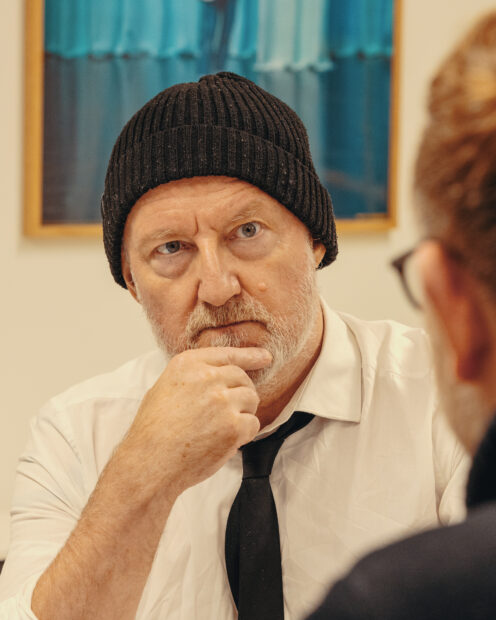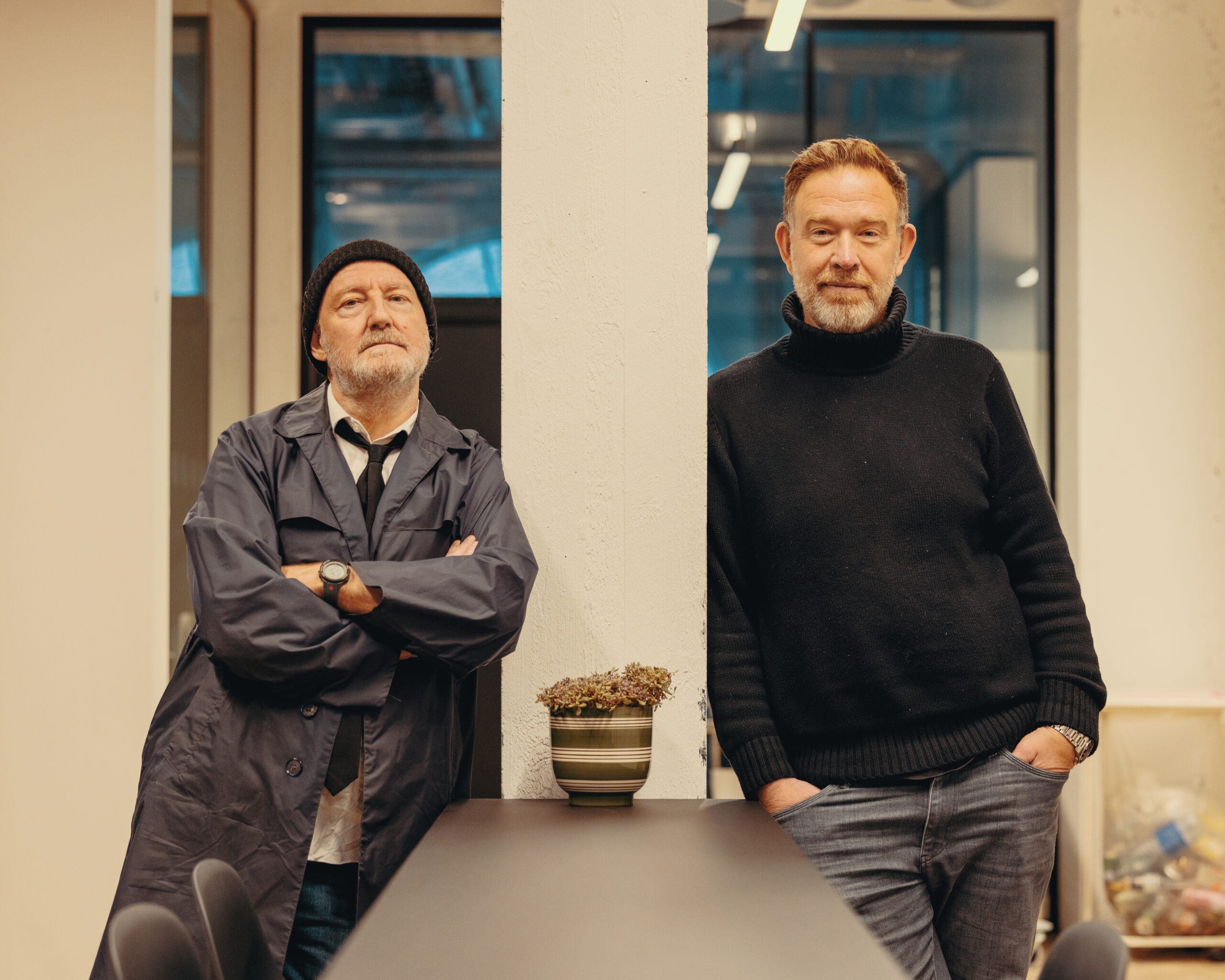In this first interview of The Lynch Interviews series, Stuart Lynch speaks with Danjel Andersson, the leader of Dansehallerne. Andersson is a dramaturge, critic, lecturer, and performance scientist who has transformed Dansehallerne from a nomadic dance organization into a state-of-the-art dance venue located in the heart of Carlsberg City. Lynch joins Andersson just before the Christmas rush to discuss his vision, the new venue, and what keeps him inspired.
Hello, Danjel. It’s a pleasure to be here with you today. Let’s jump right in, Dance in the old Carlsberg Brewery. How come?
Thank you, Stuart. It’s great to have you here. Carlsberg City has always been deeply connected to art, both now and historically. You can see it as you walk around: the statues, mosaics, and architecture. The identity of a Danish cultural person is intertwined with both beer, art, and culture. Carl Jacobsen, one of the founders of the Carlsberg Brewery, even involved dancers from the Royal Danish Ballet to inspire sculptors. One of these dancers became the model for the world-famous Little Mermaid statue.
And that tradition continues today?
Absolutely. When they began transforming the brewery district, Dansehallerne was a key part of the vision. We started as a fusion of two organizations: Dansescenen, which focused on presenting dance, and Dansens Hus, which provided dance training and studio space. For years, we operated nomadically, but on August 31st, we opened this incredible venue. It’s now the largest artistic space in Carlsberg City, surrounded by a growing residential community.
Yes, the area is expanding rapidly—with building after building, many of them towering high.
It’s extraordinary growth, and as an artistic organization, we endeavour to be more than an evening performance venue and offer morning classes, services for the dance community, children’s programs, and rehearsal spaces—all day, every day.
A real factory for art, then?
Exactly. And it’s a space where both practicing artists and audiences can feel at home and inspired.
What can people expect when they walk through the doors?
First and foremost, they’re welcomed into a warm, inviting space. We’ve worked hard to create that atmosphere, with a café and a library. From there, visitors often comment on the stunning architecture.
It really is breathtaking—I expected it to be good, but it’s exceptional.
Thank you. It is indeed wonderful. It’s been widely praised in architectural journals and Danish newspapers. It is the baby of Nikolai Rahbek Ernst from Mikkelsen Arkitekter, and the building is so beautiful that people often drop by just to see it. Local residents are proud to have such a vibrant and stylish space in their community. I even give tours for those curious to look inside.
But I can sense your influence—the spaces are clearly designed with dance in mind.
That’s true. I advocated for certain features, like ensuring the performance spaces meet international touring specifications. Sometimes, that meant designing to within a millimeter of what was possible, but the space must be relevant for both domestic and international art.
What’s your vision for these performance spaces?
My vision is to create a house that can can be a container for many different kinds of dance art that is happening now. A place to present what is happening in Danish dance and on the international scene can be seen. The space is designed to adapt to different directors and visions, ensuring flexibility for the future. While my vision shapes the house today, it’s also built to transcend any one director, allowing the dance community and audiences to evolve together.
What does the current program offer?
The closest term would be contemporary dance, but within this category, I’d emphasize that each genre brings its own unique concepts and qualities, all of which are exceptionally diverse. Different philosophies, approaches, age groups, demographics, and body types are represented. In just the past few months, we’ve showcased performances from Denmark and abroad, hosted talks, workshops, and ensured the programming is thoughtfully tailored to different age groups and contexts.
This is essentially a contemporary art gallery for dance, showcasing a wide range of styles, with the exception of classical ballet, which is well-covered elsewhere. Since opening, we’ve been consistently sold out. Visitors join a passionate audience base, and with almost 50 productions a year, they can experience something new nearly every week. Many who get their first taste of dance here are eager to return. It’s far from being a niche art form for an elite audience in Copenhagen—it holds widespread and growing appeal.
Is there support for the local dance community?
Space availability is a challenge, but we aim to inspire others to showcase dance while also supporting them in creating and developing their work. We strongly advocate for fair pay for artists and strive to be a key player in an ecosystem that strengthens dance and choreography both in the city and across the country. While we can’t cover every aspect, it’s essential that we focus on doing what we do well without overextending.
With that in mind, we’ve launched initiatives such as New Shit, which curates emerging dance works, and Kora, a program designed to bring dance to children in schools. Additionally, we are proud participants in the Salavisa European Dance Award and the European Dance Development Network.
As the devil’s advocate: Why should people come here?
Dance is the mother of all arts. At Dansehallerne, you experience an art form that transcends language, connecting directly with real time and space.
To wrap up, what inspires and relaxes you beyond your work here?
Family—my kids are my greatest joy, though there’s not much time between them and this job. I also love music and collecting vinyl records. Lately, I’ve been exploring Japanese jazz-funk and acid. Acid jazz, not the drug!
Stuart Lynch is a writer, theatre director, and Butoh Dancer and since the late 90s a prominent figure in Danish dance, theatre, and performance. He is currently the Artist-in-Residence at Literaturhaus in Nørrebro and was the leader of the Copenhagen Film and Theatre School (KFTS) from 2013 to 2023. Lynch Interviews intriguing, interesting and prominent individuals who shed light on life and contemporary attitudes within the Scandinavian and Danish culture. Photo portraits by Benny Thaibert.
Photo by Benny Thaibert. Thaibert is a designer, and photographer and runs the Bitamin Gallery in Østerbro.














